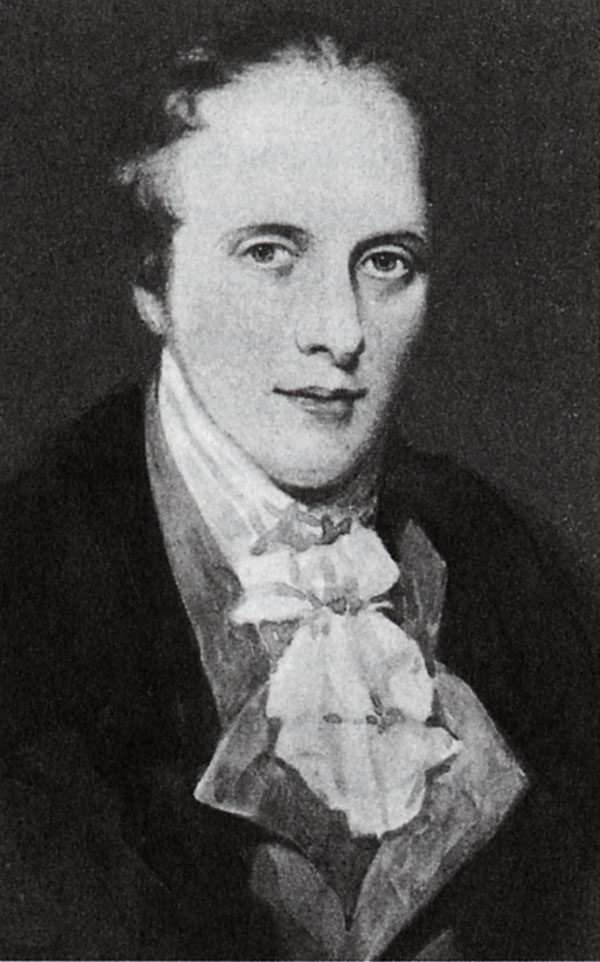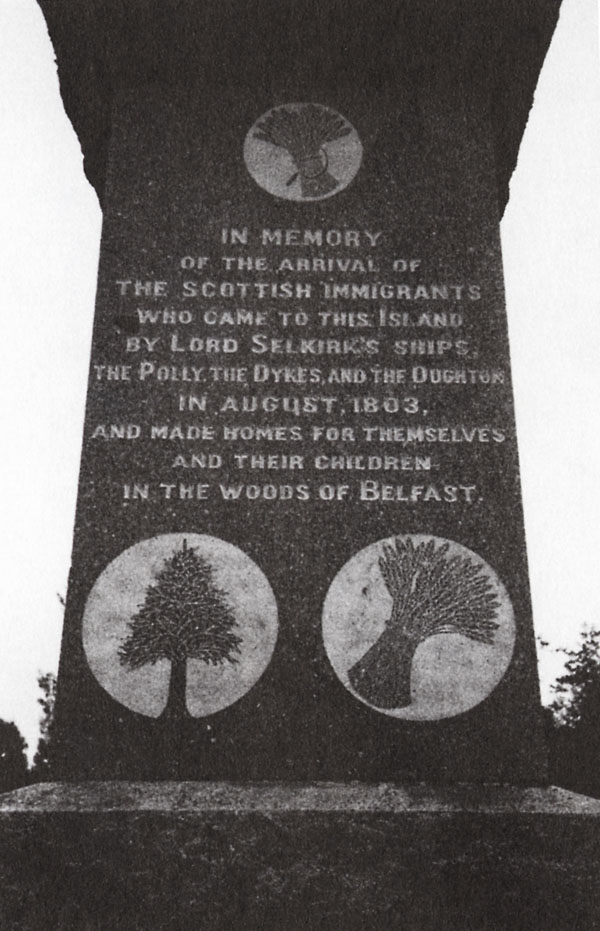|
 The Selkirk Settlement - Belfast, PEI Posted by:  T0SHEA T0SHEA
N 46° 05.638 W 062° 54.762
20T E 506748 N 5104491
On the shore of Orwell Bay in Southern Kings County is a campground and park, Lord Selkirk Campground, in which stand several monuments to the settlers of Belfast and area.
Waymark Code: WMY76H
Location: Prince Edward Island, Canada
Date Posted: 05/03/2018
Views: 4
One of the monuments is this CNHE plaque which commemorates Thomas Douglas, Fifth Earl of Selkirk, and the immigrants who arrived here in 1803 from the Scottish Highlands to begin a new life. The plaque is mounted on a cairn made of mortared native sandstone rocks at the southeast corner of the campground, beside Selkirk Park Road.
With poverty and even starvation becoming widespread in Ireland and the Scottish Highlands, it was Thomas Douglas who proposed emigration as a possible solution to the problem. He was eventually able to convince the government to allow emigration of Scots Highlanders, the emigration of 800 of which took place in 1803. The government refused to finance the project, however, so Thomas used his own money to fund the expedition.
Though he later became entwined in politics at home, Douglas, later known as Lord Selkirk, never lost his desire and drive to aid the destitute farmers and serfs of Scotland and Ireland, organizing further migrations to Canada, most successful, some not so.
THE SELKIRK SETTLEMENT
The settlement founded in this area by Thomas Douglas, Fifth Earl of Selkirk, was the first systematic attempt to direct to British North America the tide of dispossessed Highlanders which had been flowing to industrial Britain and the United States. The 800 settlers who arrived here in 1803 aboard the "Polly," "Dykes," and "Oughton" enjoyed Selkirk's financial support and personal supervision, and settled on land which he had purchased. Together with earlier immigrants from the Highlands and Hebrides, the Selkirk settlers established an enduring Scottish tradition in Prince Edward Island.
From the CNHS Plaque
By July 1803, when the expedition set out, it had been delayed too long for much clearing of land or planting in the first year. Selkirk’s ship, the Dykes, reached the Island on 9 August, two days after the Polly; the Oughton would arrive on the 27th [see James Williams]. Despite the lateness of the season, hindrances from local government, and disputes over land claims and preferences among the settlers, the colony was from the first a success to match Selkirk’s dreams and support his arguments. By the time he left in late September 1803 his people were well on the way to being happily established, mainly on lots 57, 58, 60, and 62.
From Biographi Canada
Lord Selkirk

Lord Selkirk began to travel and plan, trying to find the best place for these farmers to go. In 1802, he decided that Prince Edward Island was that place. Lord Selkirk bought an estate of 80 000 acres and put forward his plan to the government. The government refused to support him, but he did not give up. Instead, he used his own money from an inheritance to finance the trip.
Lord Selkirk financed three ships to take the Scottish farmers to Prince Edward Island. They set off in the summer of 1803. The first ship, the Polly, landed on August 7th. Lord Selkirk was on the Dykes, which arrived two days later. The third ship, the Oughton, arrived on August 27th. In all, about 800 crofters emigrated with Lord Selkirk. They were mostly from Skye, a mountainous island in the Hebrides of Scotland. They settled on Selkirk's land in the woods of Belfast, Prince Edward Island.

The land these new settlers were to have was evergreen forest. Each family was given between 50 and 150 acres for a small price. The lots were laid out so that four or five families were grouped together. In this way, they were able to comfort and support each other. They then began the difficult task of clearing the land.
Among the Selkirk settlers were a teacher, Donald Nicholson, who taught their children and a doctor, Dr. Angus MacAulay, to look after the sick.
John Macdonald, a Highland chieftain, also purchased a large section of land in Prince Edward Island. In the early 1800s, he arranged for a large-scale emigration to the island, sending emigrants from his own estates and those of his cousin, as well as people from the island of Uist, Scotland to live on this land.
From Collections Canada
URL of Page from Heritage Register: [Web Link]

Address of site:
123 Selkirk Park Road
Belfast, PE
C0A 1A0

Site's Own URL: Not listed

|
Visit Instructions:
To log a visit for this category please include a photo of the property taken by you. Tell us what you like about the site and make an observation on some aspect of the visit - history, a detail of the building, the neighbourhood, etc.
Recent Visits/Logs:
| There are no logs for this waymark yet. |
|
|
|
|